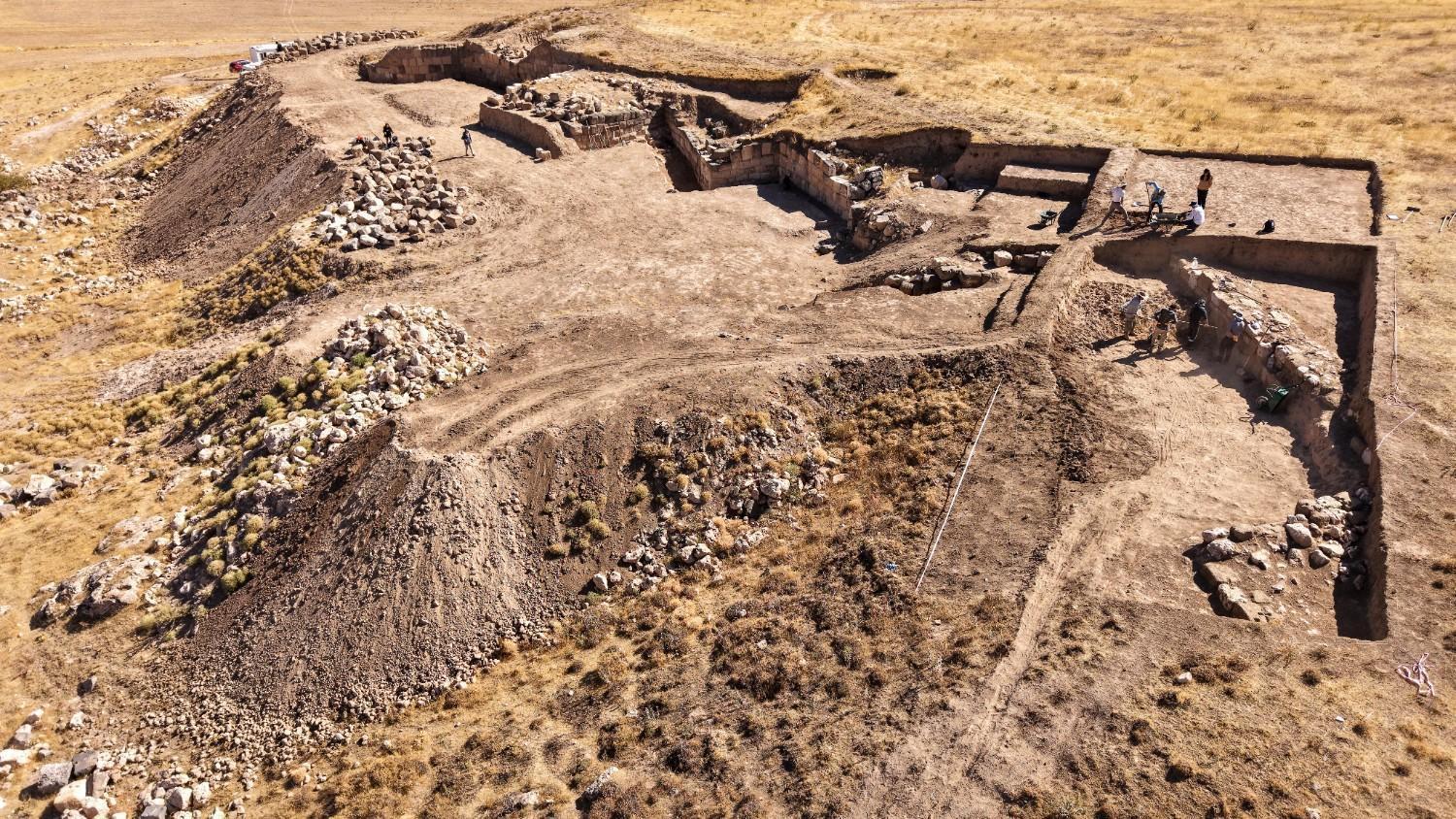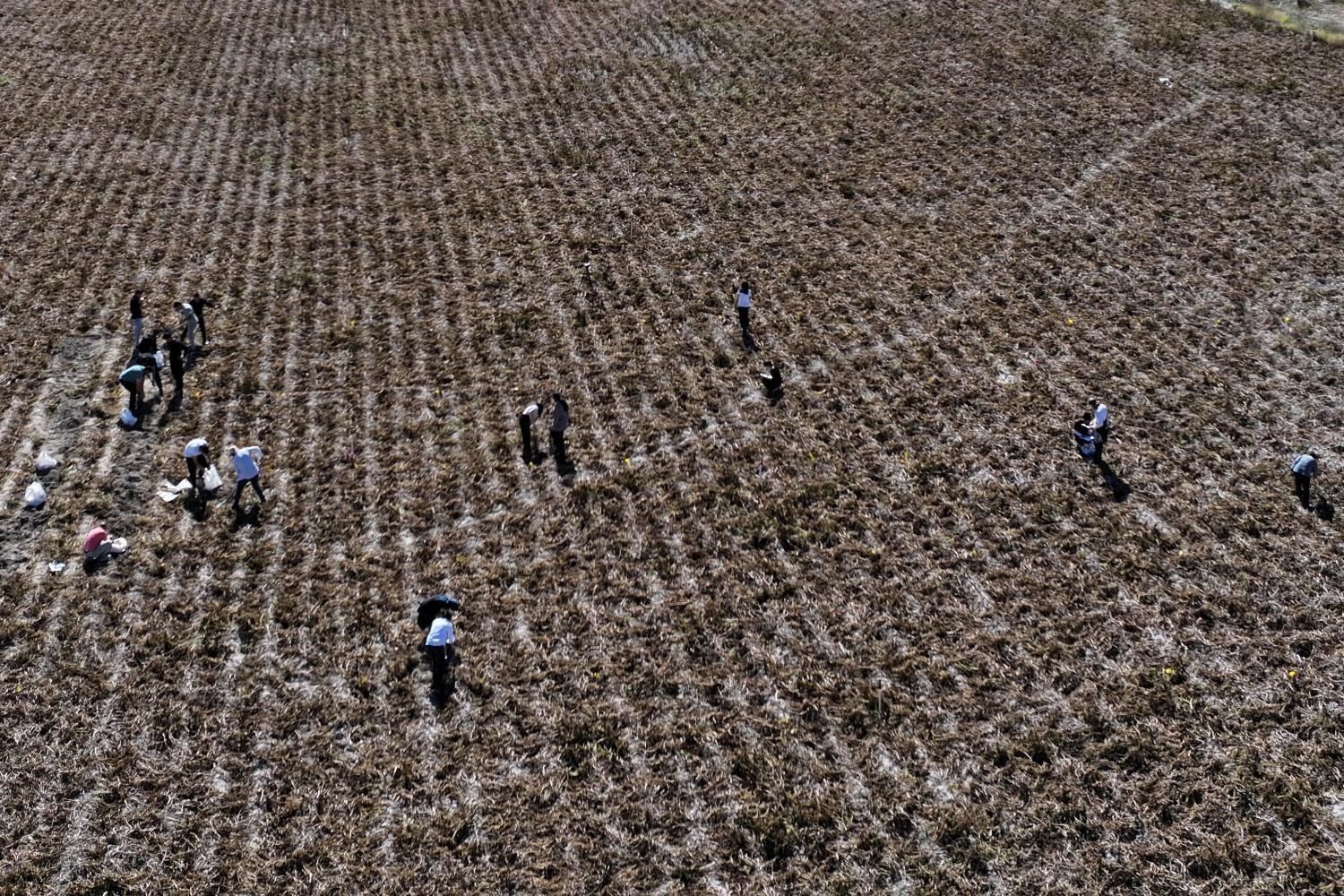New inscriptions unearthed at Zernaki Tepe
VAN

Six new inscriptions have been discovered at the remains of an ancient grid-planned city in the eastern province of Van, where excavations have also revealed oval-shaped bastions and drainage channels once used to discharge water from the city walls.
Archaeological work continues at Zernaki Tepe, a 270-hectare site located in the Yukarı Işıklı neighborhood of Erciş, under the permission of the Culture and Tourism Ministry. The excavation team is led by the Van Museum Directorate with academic consultancy from Professor Rafet Çavuşoğlu, dean of the Faculty of Letters and head of the Archaeology Department at Van Yüzüncü Yıl University, with contributions from other experts in the field.
Supported by the Van Governor’s Office and Erciş District Governorate, excavations have been ongoing since 2021, uncovering significant findings each year. In this year’s work, six new inscriptions — four of them located on the city walls — were found, while previously identified fortifications became more visible.
Çavuşoğlu told Anadolu Agency that the team began this year’s excavations on Sept. 1, focusing on the northeastern section of the city walls to make the structures more distinguishable. Similar work was carried out on the northwestern side, where two additional trenches were opened to trace the continuation of the walls.
“This year, between two towers, we found four new inscriptions in addition to the ones previously identified,” Çavuşoğlu said. “We also uncovered two other inscriptions in different areas. Three of them were damaged either during or after their period of use, with the surface inscriptions deliberately scraped off. This likely points to inter-civilizational conflict or the later civilization’s attempt to erase traces of the previous one.”
Water drainage system also uncovered
Çavuşoğlu said the team encountered important structural features during the excavations.
“On the surface of the walls, we found both inscriptions and a water drainage system designed to discharge accumulated water from within the city,” he explained. “This is highly significant because it demonstrates an organized urban infrastructure and a well-functioning waste water system. One of the stone types used in the walls is limestone, which forms the bedrock of Zernaki Tepe, while another is basalt, transported from a location about four kilometers away. The walls stand around three meters high, topped by eight layers of mudbrick totaling about 120 centimeters. They are roughly 4.25 meters thick and constructed with stone facing on both the interior and exterior.”
Erciş District Governor Murat Karaloğlu said Zernaki Tepe is believed to be the first grid-planned ancient city in Eastern Anatolia.
“The excavations continue to reveal remarkable findings,” Karaloğlu said. “This year, six new inscriptions were found, bringing the total to 14 Aramaic inscriptions discovered so far. Water channels were also identified. Estimated to date back about 3,000 years, the site is believed to mark the entrance gate of the ancient city, which features wide and monumental fortifications. We expect that these excavations will make a major contribution to the tourism and history of Van and Erciş and shed new light on world history.”















